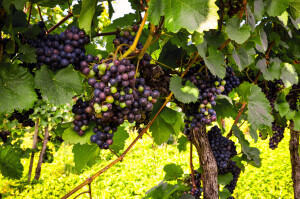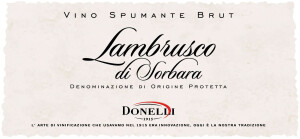 You may love it, or you may hate it—but if you know Lambrusco well, you probably love it. While the category suffers somewhat from an old-fashioned (and undeserved) reputation painting it as an always sweet, sometimes sticky and weirdly bubbly red—the truth is quite different. High-quality Lambrusco exists, and it can be red or rosé, spumante or frizzante, and is typically dry (although you may stumble upon an off-dry version if you try).
You may love it, or you may hate it—but if you know Lambrusco well, you probably love it. While the category suffers somewhat from an old-fashioned (and undeserved) reputation painting it as an always sweet, sometimes sticky and weirdly bubbly red—the truth is quite different. High-quality Lambrusco exists, and it can be red or rosé, spumante or frizzante, and is typically dry (although you may stumble upon an off-dry version if you try).
These refined versions of Lambrusco have been around a while and, beginning this year, another has emerged: Lambrusco di Sorbara Bianco Spumante DOC—a white Lambrusco. While other regions are expanding their repertoire to include rosé, Lambrusco has added white wine to theirs. While the grapes used in the production of Lambrusco are red, it is possible to squeeze the white(-ish) juice away from the red grape skins before any color extraction takes hold and produce a white wine from red grapes. Champagne (that other well-known sparkling wine) famously uses this method in the production of blanc de noirs.
Lambrusco di Sorbara is produced in the commune of Modena, located somewhat in the center of the province of Emilia-Romagna and stretching across part of the Po River Valley into the foothills of the Apennines. The appellation is named for a grape variety—Lambrusco di Sorbana—which must comprise at least 60% of the blend. Lambrusco Salamino may be included up to a maximum of 40%, while other Lambrusco varieties may be included in small amounts (up to 15%).
According to the updated disciplinare (rules of the appellation), the wines of the Lambrusco di Sorbara Bianco Spumante DOC are described as “refined and elegant (fully) sparkling white wines of high quality.” These wines may be produced using the tank method, or via the medoto classico (classic method of sparkling wine production, indicating that the second fermentation occurs in the bottle rather than a tank).
In addition, the wine is produced according to the following specifications:
- Appearance: fine and long-lasting bubbles, straw-yellow color in varying levels of intensity
- Aromas: fruity, floral, and intense
- Sweetness: Various levels of sweetness are allowed and will be designated as such on the label
- Minimum abv: 11%
- It is permitted for the wine to remain non-disgorged. Such wines will appear slightly cloudy and may contain the term rifermentazione in bottiglia (secondary fermentation in the bottle) on the label.
Welcome to the world, Lambrusco di Sorbara Bianco Spumante DOC!
TL/DR—News flash for wine students: The Lambrusco di Sorbara DOC has approved a new style of wine for the appellation—a white sparkling wine to be known as Lambrusco di Sorbara Bianco Spumante DOC
References/for more information:
- Official Journal of the EU – Lambrusco di Sorbara DOC-March 2025
- Disciplinare – Lambrusco di Sorbara DOC – updated 2025
- Click here for a wine map of Emilia Romagna, via Federdoc
Post authored by Jane A. Nickles…your blog administrator: jnickles@societyofwineeducators.org
